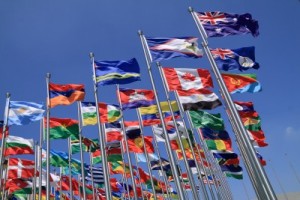 Match the holiday with its faith and representative country
Match the holiday with its faith and representative country
-
A. Eid al Fitr (end of Ramadan) 1. Hindu (Singapore) B. Ash Wednesday (first day of Lent) 2. Jewish (USA) C. Vaisakhi (Solar New Year) 3. Islamic (Oman) D. Shavuot (laws given to Moses) 4. Christian (Venezuela)
-
- True or false: An early Scandinavian calendar was based upon the phases of the moon.
- The solar year, which reflects the approximately 365 days and six hours it takes for the earth to revolve around the sun, was made the basis of a calendar in 46 BC by:
- A. The Aztecs
- B. The Polynesians
- C. The Romans
- Pope Gregory XIII made the last day of the Julian calendar Thursday, October 4, 1582. The next day was Friday, October 15 -- the first day of the new Gregorian or Western calendar. However, Protestant princes ignored the papal bull and continued using the Julian calendar for many years. Match the countries with the year they adopted the Gregorian calendar.
-
A. England 1. 1700 B. Germany 2. 1752 C. Russia 3. 1918
-
- Lunation refers to the interval from one new moon to the next, and is the basic unit for the oldest calendars of record. True or false: The Islamic, or Hijrah, calendar has 354 days.
- True or false: Belgium is one of the top trading nations in the world, yet has one of the shortest workweeks.
- What's a normal workweek? If you are on the job Saturday through Wednesday, you are in:
- A. Tortola
- B. Belize
- C. Bahrain
- True or false: Christmas Eve and the first full day of Hanukkah fall on the same date in 1997.
- The Chinese calendar has major cycles of sixty years, and minor cycles of twelve years, each named for an animal. Which is not one of the twelve years: Rat, Tiger, Hare, Dragon, Snake, Eagle, Monkey, or Rooster (or Cock).
- The Romans named their days after planets, and Dies Veneris eventually evolved into our favorite -- Friday! Match Venus' day with its language.
-
A. Vendredi 1. Spanish B. Venerdi 2. Italian C. Viernes 3. French
-
Answers
- A, 3; B, 4; C, 1; D, 2
- False. Calendars in environments such as Sweden and Finland, where the end of winter is a major event, were based upon the seasons of the year.
- C. The Julian calendar was a sweeping reform implemented by Julius Caesar. It is still the calendar of Eastern Orthodox churches, and runs approximately thirteen days behind the Gregorian.
- A, 2; B, 1; C, 3
- True. The Hijrah is a lunar-based calendar. With a lunation being twenty-nine and one-half days long, the lunar year has 354 days -- eleven days less than a solar year.
- True. At 35.8 hours, the Belgian workweek is one of the shortest in the world.
- C. Friday is the Muslim Holy Day, and in Islamic countries such as Bahrain, most practicing Muslims take off Thursday and Friday.
- True. However, Hanukkah begins at sundown on the evening prior to the 24th.
- The Eagle is not one of the twelve. The other animals are the Horse, Ox, Sheep (or Goat), Dog, and Pig (or Boar).
- A, 3; B, 2; C, 1
